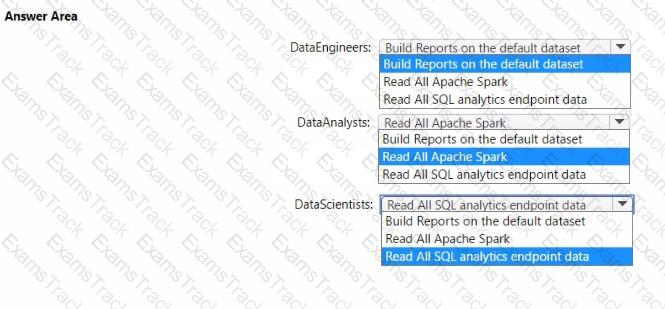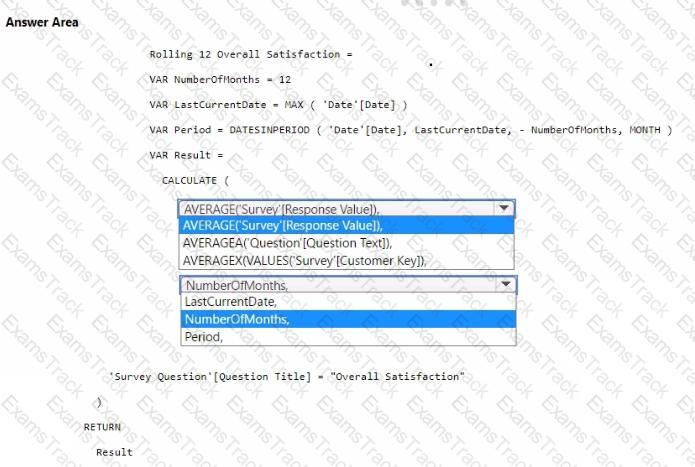You have a Fabric tenant that contains a warehouse named DW1 and a lakehouse named LH1. DW1 contains a table named Sales.Product. LH1 contains a table named Sales.Orders.
You plan to schedule an automated process that will create a new point-in-time (PIT) table named Sales.ProductOrder in DW1. Sales.ProductOrder will be built by using the results of a query that will join Sales.Product and Sales.Orders.
You need to ensure that the types of columns in Sales. ProductOrder match the column types in the source tables. The solution must minimize the number of operations required to create the new table.
Which operation should you use?
You have a Fabric tenant that contains a lakehouse. You plan to use a visual query to merge two tables.
You need to ensure that the query returns all the rows that are present in both tables. Which type of join should you use?
You have Fabric tenant that contains four workspaces named Development, Test, QA, and Production. All the workspaces are in Premium Per User (PPU) license mode.
You plan to use a release pipeline to support the development lifecycle from Development to Production.
Which three actions should you perform in sequence? To answer, move the appropriate actions from the list of actions to the answer area and arrange them in the correct order.

You have a Fabric tenant that contains a data warehouse.
You need to load rows into a large Type 2 slowly changing dimension (SCD). The solution must minimize resource usage. Which T-SQL statement should you use?
You have a Fabric tenant that contains a warehouse.
Several times a day. the performance of all warehouse queries degrades. You suspect that Fabric is throttling the compute used by the warehouse.
What should you use to identify whether throttling is occurring?
You have a Microsoft Fabric tenant that contains a dataflow.
You are exploring a new semantic model.
From Power Query, you need to view column information as shown in the following exhibit.

Which three Data view options should you select? Each correct answer presents part of the solution. NOTE: Each correct answer is worth one point.
You to need assign permissions for the data store in the AnalyticsPOC workspace. The solution must meet the security requirements.
Which additional permissions should you assign when you share the data store? To answer, select the appropriate options in the answer area.
NOTE: Each correct selection is worth one point.

You need to create a DAX measure to calculate the average overall satisfaction score.
How should you complete the DAX code? To answer, select the appropriate options in the answer area.
NOTE: Each correct selection is worth one point.


You have a Microsoft Power BI semantic model that contains a measure named TotalSalesAmount. TotalSalesAmount returns a sales revenue amount that is translated into a selected currency.
You need to ensure that the value returned by TotalSalesAmount is formatted to use the correct currency symbol.
What should you include in the solution?
You need to resolve the issue with the pricing group classification.
How should you complete the T-SQL statement? To answer, select the appropriate options in the answer area.
NOTE: Each correct selection is worth one point.


|
PDF + Testing Engine
|
|---|
|
$52.5 |
|
Testing Engine
|
|---|
|
$40.5 |
|
PDF (Q&A)
|
|---|
|
$34.5 |
Microsoft Free Exams |
|---|

|